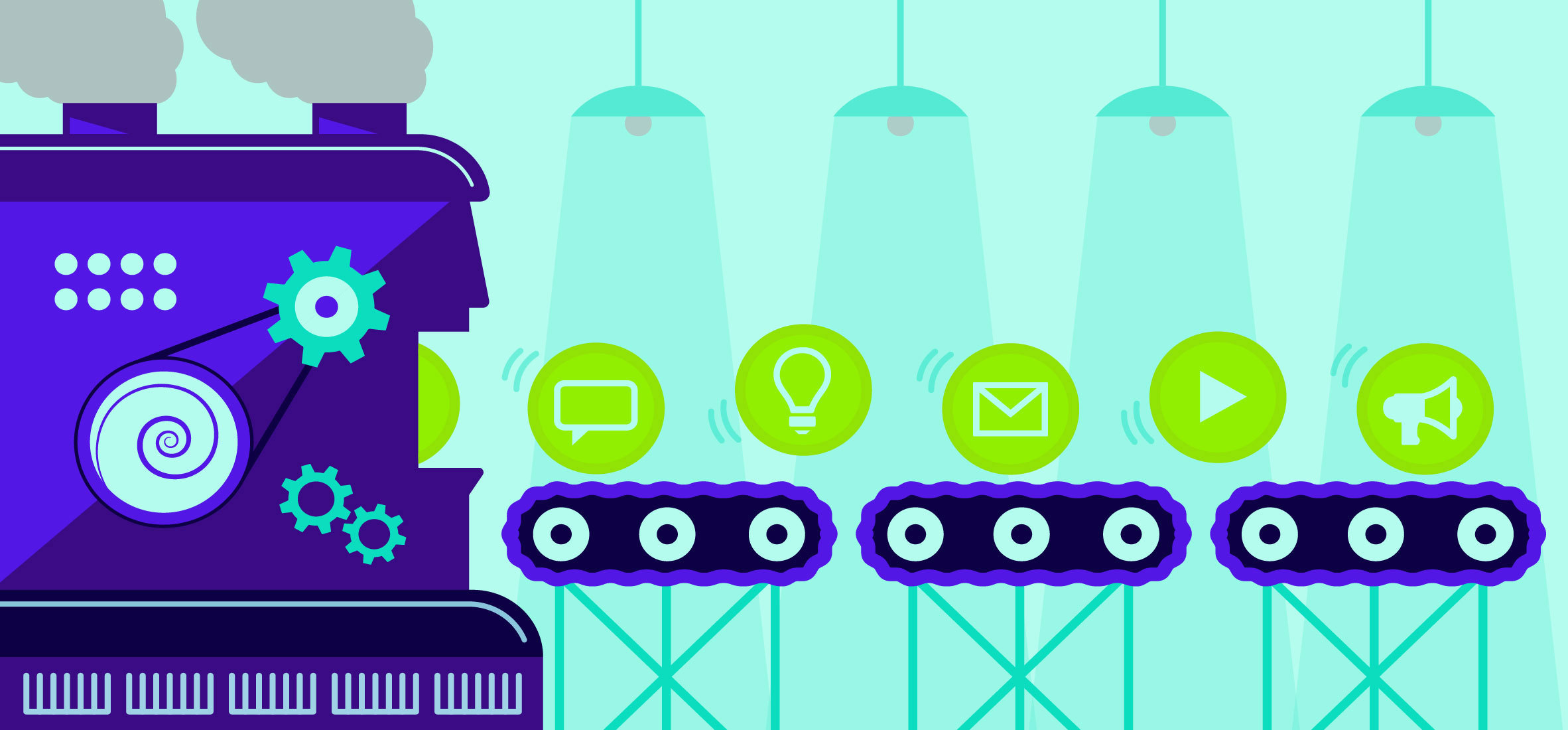

The goal of a marketing program is to serve the right content at the right time to your target audience. The goal of a marketing automation program is no different. Automation shouldn’t change what you want to accomplish, but it should save you time and money while helping you scale. Unfortunately, the amount of effort it takes to establish and maintain a marketing automation system is often costlier than the rewards. Here are a few things you should understand if you want to get marketing automation off the ground and see positive ROI.
Simple is good
If you’re considering marketing automation as a solution for your business, you’ll soon learn that getting things up and running is a complex task. It requires the coordination of many disciplines and overlapping dependencies. For example, you’ll need to consider the following:
- Content strategy. What do you want your customers to do, learn, and ultimately purchase? How often do you communicate with your leads and when are they ready for sales calls?
- Content journey. What is the right way to show the lifecycle of your leads so that your key decision makers can make sense of it?
- Content development. What is the right message for new leads, and how much content do you create to support a lead’s specific interests?
- Automation software. What automation product will you use? How much can you manage in-house and how much support do you need from technical experts?
- Development costs and efforts. Do you have the right email templates and page templates? Do you have a website ready to support new content? And what new materials do you need to create?
- Demand generation. Once your story is ready to unfold, how will your audience find it? And will you generate enough traffic through the journey to justify the costs of implementation?
Once you get started, many other sub-projects will add themselves to this list. These can stir up whirlpools among your stakeholders, creating distracting discussions and subsequent delays. With that in mind, you’ll need clear priorities. The first iteration should be as simple as possible. Leave optimization and diversification to subsequent efforts.
Content is king
No customer is impressed by automation. To her, there is nothing compelling about it at all. Customers care about content, so your first priority should be capturing their attention and offering something of value. One of the tools that can help you craft engaging content is the customer persona. If done thoughtfully, persona research provides a frame of reference, not just for content writers, but also for:
Content strategists. Where do we find our audience? How do we tell our story? Nurture journey architects. How do we encourage leads to discover solutions for themselves? Will the journey surface qualified leads effectively? Interactive developers. How can we use the best technologies to simplify, support, and enhance the experience for leads?
The journey matters
The next important task is to define the first journey, the starting point, and the minimum viable product. One of the great benefits that come with an automation platform (once it is operational) is that your marketing campaigns can be observed, tested, measured, and improved.
In order to get that first journey launched, you’ll need to identify the most basic conversation you will have with your customers. It’s tempting to have your journey account for every one-off and corner case (we are conditioned to look for exceptions and to illuminate them). But try to resist this urge. Plan for the first journey to serve the simplest need and target the largest behavior set—whether it’s 80 percent of your audience or even 50 percent.
One way to look at this philosophy is from a Six Sigma planning approach:
- Identify the most obvious opportunities for improvement
- Focus on the biggest and most obvious, and create a solution
- Measure that solution’s performance while dreaming up solutions for the second most obvious opportunity
- Iterate and choose only the next most obvious/valuable opportunity
The future is near
When planning your first marketing automation program, it can be a challenge to focus on today without losing sight of tomorrow. New ideas will abound, and future concerns will surface. You’ll need to compartmentalize the planning conversation into short, medium, and long-term thinking. Dive into the short-term challenges as they must be overcome to begin the program. Use the medium-term concerns to help shape a scalable solution. And let long-term thinking help you recognize and plan for big ideas that are before their time. This approach will help you manage scope, control costs, and make the necessary short-term decisions with the long-run ROI in mind.
About the author




